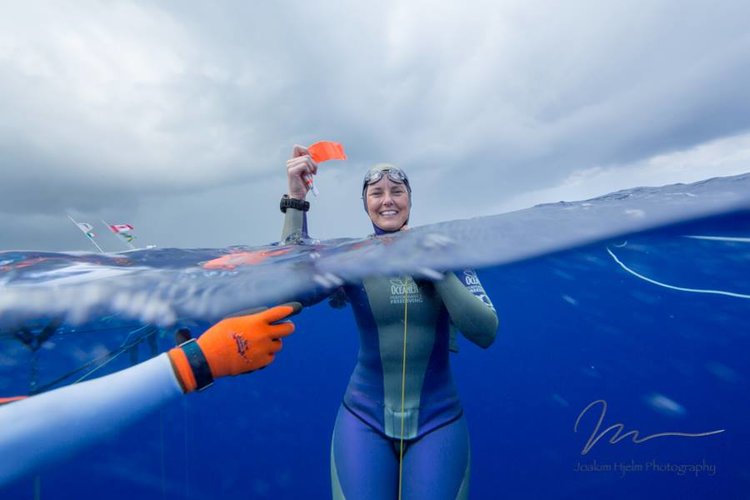Winter Training
By John Hullverson – 2 x U.S. National DNF Record Holder and PFI Staff Instructor
In the winter months in California, the weather often makes it hard to train consistently and I find myself searching for new and interesting ways to help keep my mind and body in decent dive shape.
There’s one particular drill I’ve been doing lately that has really helped me strengthen my mind when a breath hold becomes difficult, or when some external (or internal) event triggers my sympathetic nervous system response. It helps train my mind to quickly recognize the physiologic reaction to stress, assess it, accept it, and then let it go so I can continue my breath hold in relative comfort.
I think all freedivers know that feeling that flashes through your body when something unexpected happens on a dive—maybe your lanyard catches on the bottom plate at 50 meters, or you think you see “the man in the grey suit” out of the corner of your eye while spearfishing. Maybe it’s just that moment during a static breath hold where your mind races and tells you “today’s not the day—quit NOW!” In each of those instances, that flash of adrenalin is your sympathetic nervous system preparing your body for
“fight or flight”. The body constricts vessels, prioritizes blood flow and increases heart rate, among other things. This prepares your body to fight or to flee, but it obviously hurts your breath hold. It’s a very helpful skill for Freedivers to be able to recognize and shut down that response—to calm yourself, slow your heart rate and continue with your breath hold. That’s the realm of the parasympathetic nervous system—to counteract the effects of the sympathetic nervous system response and return your body to homeostasis.
So enough with the science—what’s this tip I’m telling you about? Well, It involves performing a breath hold (usually during dry land training) and when the going gets tough, just give up mentally and allow your mind to go to that negative place where all the bad thoughts live. Agree with your body that “today’s not the day” and that you need to end this breath hold NOW. But then don’t. Practice talking yourself back down into a calm and relaxed state. Practice recognizing that “panic” or “I’ve got to quit” feeling, and then perfect your own method for shutting that down. I remind myself that I’ve been here before, that I know this is just a temporary feeling, and that I can control my response and I can do this breath hold. I then talk to my heartbeat, calmly reciting the word “Re—lax” over and over, slowly in my mind until I can feel my heart beat slow down. I can actually feel that flash of adrenaline dissipate and I can settle back into my breath hold.
It’s definitely not easy at first, but it gets you practice at a very important skill—overcoming your own mind when it turns negative. Being able to hit the “reset” button to get back on track during a breath hold will help keep you in parasympathetic mode and will prolong your dive or your static. And, in a critical situation underwater, having this ability may mean the difference between making it back to the surface, or blacking out.
Remember, train hard and have fun, and ALWAYS dive with a buddy trained to PFI safety standards.

